Related Research Articles

Terror of Mechagodzilla is a 1975 Japanese kaiju film directed by Ishirō Honda, written by Yukiko Takayama, and produced by Tomoyuki Tanaka and Henry G. Saperstein, with special effects by Teruyoshi Nakano. Distributed by Toho and produced under their effects subsidiary Toho–Eizo, it is the 15th film in the Godzilla franchise, serving as a direct sequel to the 1974 film Godzilla vs. Mechagodzilla, the final film in the initial Showa Era of the franchise before Godzilla returned nine years later in The Return of Godzilla, directed by Ishirō Honda and scored by Akira Ifukube before their deaths.

Kaiju is a Japanese term that is commonly associated with media involving giant monsters. A subgenre of science fiction, it was created by Eiji Tsuburaya and Ishirō Honda. The term can also refer to the giant monsters themselves, which are usually depicted attacking major cities and battling either the military or other monsters.

Creature Double Feature is a television show, syndicated in the Boston and Philadelphia area during the 1960s, 1970s and 1980s. It sometimes also aired under names like Sci-Fi Flix and Creature Feature. The show aired classic monster movies, with the name "Creature Double Feature" based on its airing two movies during its three-hour time slot. The movies broadcast were taken from the classic Universal Horror movies of the 1930s to 1950s, the Hammer Studios and American International Pictures films of the 1950s, Roger Corman's horror films of the 1960s, and Toho Studio's "giant monster" movies of the 1950s, 1960s, and 1970s.
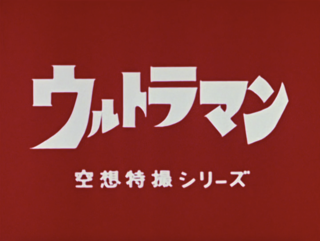
Ultraman is a Japanese tokusatsu science fiction television series created by Eiji Tsuburaya. Produced by Tsuburaya Productions, it is a follow-up to Ultra Q, though not technically a sequel or spin-off. Tsuburaya Productions produced 39 episodes that aired on Tokyo Broadcasting System (TBS) and its affiliate stations from July 17, 1966, to April 9, 1967. Its premiere topped the average rating set by Ultra Q and kept climbing each week, marking the show as a success. It was also the first Japanese television series to use a bidding system for commercial rights, allowing multiple third-party companies to sponsor the show. This was following TBS's merchandising troubles with its predecessor.

King Ghidorah is a fictional monster, or kaiju, which first appeared in Ishirō Honda's 1964 film Ghidorah, the Three-Headed Monster. The monster was initially created by Tomoyuki Tanaka, Eiji Tsuburaya, and Shinichi Sekizawa as an homage to the eight-headed mythological Japanese dragon Yamata no Orochi. Although the name of the character is officially trademarked by Toho as "King Ghidorah", the character was originally referred to as Ghidorah, Ghidrah, or Monster Zero in some English markets.
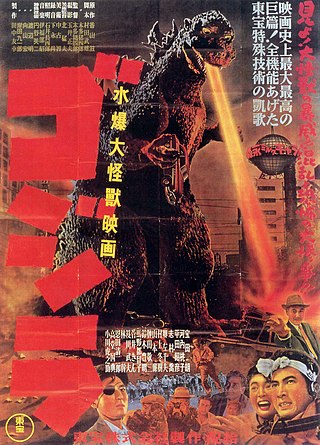
Tokusatsu is a Japanese term for live-action films or television programs that make heavy use of practical special effects. Credited to special effects director Eiji Tsuburaya, tokusatsu mainly refers to science fiction, war, fantasy, or horror media featuring such technology but is also occasionally dubbed a genre itself. Its contemporary use originated in the Japanese mass media around 1958 to explain special effects in an easy-to-understand manner and was popularized during the "first monster boom" (1966-1968). Prior to the monster boom, it was known in Japan as Tokushu gijutsu or shortened Tokugi.
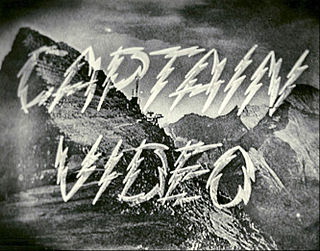
Captain Video and His Video Rangers is an American science fiction television series that aired on the DuMont Television Network and was the first series of its genre on American television.

KTVU is a television station licensed to Oakland, California, United States, serving as the San Francisco Bay Area's Fox network outlet. It is owned and operated by the network's Fox Television Stations division alongside San Jose-licensed independent outlet KICU-TV. The two stations share studios at Jack London Square in Oakland; KTVU's transmitter is located at Sutro Tower in San Francisco.

Godzilla: The Series is an American-Japanese animated television series developed by Jeff Kline and Richard Raynis. The series originally aired on Fox Kids in the United States between September 12, 1998 and April 22, 2000, and is a sequel to Godzilla (1998). Malcolm Danare, Frank Welker, Kevin Dunn and Michael Lerner reprise their roles from the film.

King Kong, commonly referred to as The King Kong Show, is an animated television series produced by Videocraft International and Toei Animation. ABC ran the series in the United States on Saturday mornings between September 10, 1966, and August 31, 1969. It is the first anime-based series produced in Japan for an American company.
A horror host is a person who acts as the host or presenter of a program where horror films and low-budget B movies are shown on television or the Internet. Usually the host assumes a horror-themed persona, often a campy or humorous one. Generally there are breaks in the film where the host comments on various aspects of the movie. Many horror host shows also include skits involving the hosts themselves, sometimes with a sidekick or other supporting characters.
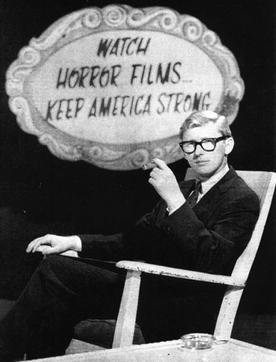
Bob Wilkins was a television personality.
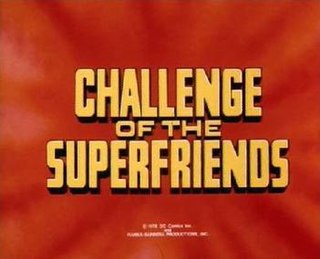
Challenge of the Superfriends is an American animated television series about a team of superheroes which ran from September 9 to December 23, 1978, on ABC. The complete series was produced by Hanna-Barbera Productions and is based on the Justice League and associated comic book characters published by DC Comics and created by Julius Schwartz, Gardner Fox and Mike Sekowsky. It was the third series of Super Friends cartoons, following the original Super Friends in 1973 and The All-New Super Friends Hour in 1977.

Creature Features is a generic title for a genre of horror TV format shows broadcast on local American television stations throughout the 1960s, 1970s, and 1980s. The movies broadcast on these shows were generally classic and cult horror movies of the 1930s to 1950s, the horror and science-fiction films of the 1950s, British horror films of the 1960s, and the Japanese kaiju "giant monster" movies of the 1950s to 1970s.
Captain Satellite was an afternoon TV program on KTVU-2 in Oakland, California. Like many kids' shows of this period, it took advantage of the interest engendered by science fiction and the early space program. The Captain was played by Bob March, a local TV personality. His signature outfit was a helmet and a dark uniform under a light-colored, triangular vest that had a thunderbolt passing through a globe. The set was a cutaway rocket ship called the Starfinder II that blasted off each day. Guest children would co-pilot under Captain Satellite's supervision. As the ship orbited on auto-pilot, the children would participate in games to win prizes, and in live promotions. Old Thirties cartoons like Scrappy and serials would be introduced between breaks, and occasionally there were special appearances, as when The Three Stooges came to visit the Starfinder II.
As an enduring and iconic symbol of post-World War II cinematic history, the fictional giant monster Godzilla has been referenced and parodied numerous times in popular culture. Godzilla and other atomic monsters have appeared in a variety of mediums, including cartoons, film, literature, television, and video games.

Cinema Insomnia is an American television program presented by horror host Mr. Lobo. It began airing in 2001 on KXTV in Sacramento, California, and from 2003 to 2008 was nationally syndicated, airing on broadcast stations across the United States. Since 2015, the program has aired on OSI74, a web television service on Roku.

Marine Kong is a 26-episode 1960 Japanese television series produced by Nisan Productions. It aired on the Fuji Television network every Sunday from April 3 to September 25. The series was about a giant dinosaurian robot created by the Z-Gang to conquer Japan. The show is notable in that it was the first Japanese television series about a kaiju.

Creature suits are realistic costumes used to disguise a performer as an animal, monster, or other being. They are used in film, television, or as costumed characters in live events. Unlike mascots, they are often made with a high degree of realism. In contrast with prosthetic makeup, which is applied to an actor's skin, the wearer is not normally visible outside their movements controlling the costume, although in some cases, part of the wearer's body is still visible.
References
- ↑ Hollis, Tim (2001-10-29). Hi There, Boys and Girls! America's Local Children's TV Programs - Tim Hollis - Google Books. ISBN 9781578063963 . Retrieved 2013-05-27.
- ↑ "'Creature Features' Host Bob Wilkins Dies". www.ktvu.com. Archived from the original on 2013-10-05. Retrieved 2013-05-27.
- ↑ "Bob Wilkins / Captain Cosmic". YouTube. 2007-01-21. Archived from the original on 2010-05-28. Retrieved 2013-05-27.
- ↑ Shock It To Me! Golden Ghouls of the Golden Gate, page 67 (Monahan, Michael and Huber, Lon; UHF Nocturne, 2011)